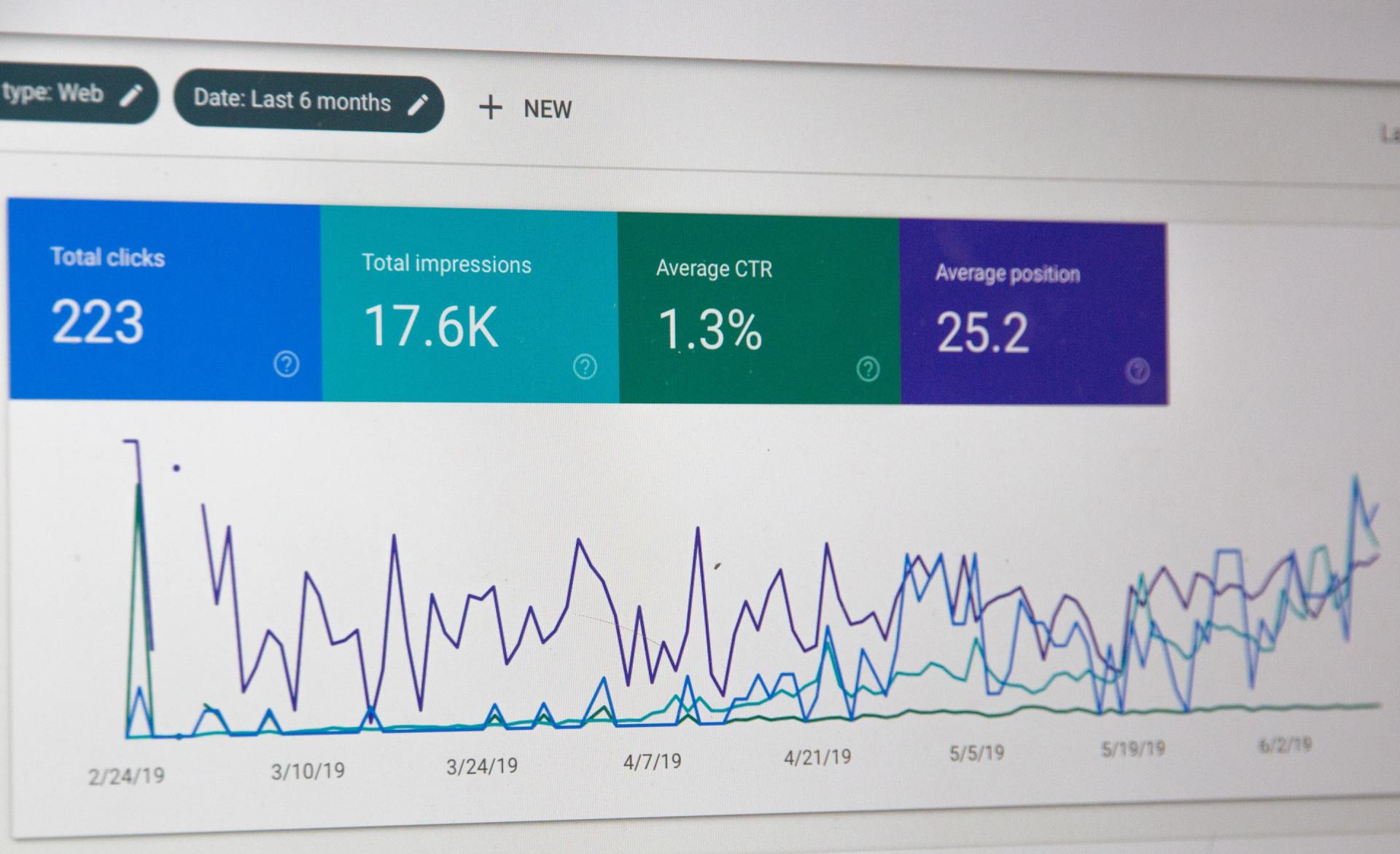Marketing Strategies For Small Businesses
Affordable Marketing Tactics for Small Businesses
As a small business, you probably don't have the same marketing budget that big companies have. This means you have to research and
carefully plan how you'll do your branding, advertising, social media, pricing, services, promotions, products, and website.
Successfully marketing your business has to involve a concentrated effort to push your brand across various platforms to make it through to your customer segment. For a small business, this can be quite a challenging feat.
So in this article, we'll give you the 411 and break down the basics of a
successful marketing strategy for small businesses.
Let's get you some much-needed visibility.
Get organized
Getting organized and having a concrete plan is the first step in having
successful marketing power. Start by brainstorming the kind of message that you want your brand to have. This means thinking about similar themes for your products, websites, and services.
Your customers should recognize your business by taking one look at any of the content you put out online or the products you see. What can you tell people about your business, services, or products in less than 30 seconds?
Once you’ve figured all these things out, the next step is to figure out how to make sure
your marketing efforts have tangible Return on Investment. So crunch some numbers and come up with a marketing budget.
To get you started, we've gathered some interesting numbers for you below:
- 79% of mobile phone users make their shopping decisions based on SMS opt-in or similar mobile device services
Consumers respond to SMS marketing over 295% more than to phone call marketing. - Statistics show that email marketing has an average Return on Investment (ROI) of 122%. The highest of any other marketing strategies.
- According to a marketing communications study by Exact Target, 77% of consumers choose email as their preferred delivery method over text and social media.
- 76% of people who search for something nearby on their smartphone visit a related business within a day, and 28% of those searches result in a purchase.
- Businesses using Google AdWords earn about $3 for every $1.60 they spend for every $1.60 they spend.
And these numbers are just the tip of the iceberg so let’s dive deeper.
Introduction To Marketing | Marketing 101 Video
Small Business Marketing Strategies
Know the marketing tools you’ll need to master
There are thousands of marketing tools that you should familiarize yourself with. Today we'll touch on the fundamentals, including:
- Inbound marketing
- Video marketing
- Digital marketing (Email & SMS)
- Social media marketing
Simply put, inbound marketing refers to the pull effect that your marketing strategies and campaigns have on your potential customers. So rather than annoy and interrupt customers with pop-up ads or unethical sales tactics, you pull them in with valuable content that is relevant to them.
Essentially
inbound marketing is about attracting, engaging, and delighting your customers. How do you do this?
Basically, you attract the customer using your website (think of it as your online curb appeal) and your blog using relevant content. Once you've got their attention, engage with them using conversational tools like email and chat and by promising continued value. Lastly, you delight them by becoming an empathetic advisor and expert.
The basics of Inbound Marketing
While we can't cover everything on inbound marketing, the basics are pretty easy to understand.
Know your customer persona and target market
The best thing you can do is to learn more about your customers. The more you understand their needs, desires, and patterns, the better you can craft a marketing message and strategy that gets to them.
Additionally, this will help you to narrow down your audience so you can choose the correct marketing channels. To gather enough data and information but be careful not to make this process too complex.
There are many ways to gather this information, but you can use the following tactics:
- Digital analytics
- Customer interviews (phone or in-person)
- User testing
- Surveys on-site polls like Qualaroo
- Live chat transcripts and intelligence via sales and service teams
You could also create a questionnaire to get an idea about your ideal customer:
What motivates them, and what do they fear?
What is their preferred method of making payment?
What kind of content is helpful to them?
How do they interact with brands?
Where do they hang out, and how can you reach them?
Map out your channels and tactics
The next step is to figure out the channels that you can use to reel in your ideal customer. For example, you can use the following marketing channels:
- Branding
- Blogging
- Search Engine Optimization (SEO)
- Google and Facebook Ads
- Referral
- Virality
Choose the best channels that work for your business. For example, if you run a detergent company, going viral probably won't make sense. Additionally, some channels might work, but you need to put so much effort that there is no tangible ROI.
The most important question to ask is how does a customer buy my product or service?
Execute Your Messaging Strategy
Once you've figured out what channel works well for your business, you'll need to develop a messaging strategy. So, for example, you may use blogging or SEO as your inbound channel.
This would mean creating relevant and valuable content for your target market that pulls them in. How do you do that? We advise working backward; in other words, start with your product as the pillar and branch out from there.
The end goal is to define your product and write relevant content related to what you're selling your customers. Two good places to find ideas are on the Google search result page or the Answer the Public page. This should bring significant traffic to your website. Then you'll simply have to worry about converting that traffic into leads and then into paying customers.
Lead conversion is a broad topic that, unfortunately, we can't cover in this article. Fortunately, there are thousands of sites where you can find information on the subject.
Video Marketing Strategy
Video marketing matters, especially for small businesses. Why? It affords you a unique opportunity to engage your customers differently.
Video has become very important in this new social media age. It generates at least %1200 more shares than text and images combined. The best part? It's not that expensive, complicated, or time-consuming.
According to a survey by Animoto, consumers feel that videos are their number one favorite type of content to see from brands on social media. In fact, 93% of marketers using video on social media say it's given them a new customer.
Video can be incorporated into your marketing campaigns to maximize your success. You can explore creating a YouTube page for your business and sending out relevant content. YouTube is a world on its own and something you should definitely tap into.
You can also incorporate video into your website. On average,
a customer spends 88% more time on a website if it has video? That’s pretty incredible! Moreover, according to Campaign Monitor, using video in your email marketing can increase your open rate by up to 19% and an up to 50% increase in click-through rate.
There are lots of fun ways you can use video marketing.
We’ve chosen a few examples for you:
- An ‘About Us’ video
- Product story video
- Video Ad
- A How to video
- Testimonial video
So just get started with what you have and remember to adapt your videos to mobile. Another great trick is to use Google or Facebook Ads Manager. These tools can help you reach the most likely customers to engage with your business or product and services. Also, ensure that you produce videos that have good audio and lighting.
Content Marketing
Content marketing is a vast subject, and we can't cover it all today, so we'll give you just the basics.
Small businesses need to have a website first and foremost. Your website is the online gateway to your business. Regardless of how big or small your business is, investing in an impressive website is essential.
Next, you need to get your email marketing under control. Email marketing is a very crucial tool. Just look at these impressive statistics:
There are over 3.7 billion email users globally; this is a huge pool that you can tap into.
The ROI on email marketing is insane.
For every $1 spent, you could get up to $44 from your email marketing campaigns, with 59% of marketers seeing significant ROI from this resource. 89% of marketers use email as their primary channel for lead generation.
Another great digital marketing resource is social media marketing. You need to improve your online visibility and take control of your digital footprint. This will control the information available about your business online. Try to use as many online platforms as you can and keep up to date with any new apps that might be making waves.
Here are some tips to help your small business marketing strategies started on social media:
- Define your goals
You need a plan on how you're going to present your business on social media. Without defined goals, your social media marketing will miss the mark most of the time. Do you want to increase brand awareness? Distribute content? Increase website traffic? Tap into influencer marketing? Do you want to support your customer? Or maybe you want to generate leads or sales? These are essential questions you need to address.
Figure out your target audience
This will determine what you post when you post and how you post.
Use social media to hunt for new opportunities
There are so many business and networking opportunities for you on social media.
Offer Coupons Or Free Products or Services
This creates brand loyalty from your existing and potential customers early on. A happy customer will likely market on your behalf, telling friends and family. They are your brand ambassadors and will help promote your business.
Boost Your Content With Paid Ads
Google is one of the best online marketing tips for small business tools that exist. They have over 50 products that you can use, and one of the best is Google AdWords.
This marketing tool is meant to precisely match the types of products or services you offer to customers searching for it on google. Keep in mind that for Google AdWords to work great, you need to have quality keywords. This will rank your business on the top of Google's search page results.
AdWords target specific geographic locations, and you can control your budget with Google's flexible pricing options. The bottom line is you can't go wrong with Google AdWords.
Create Local Awareness And Establish A Solid Network
The last thing you might need to do is to create local awareness and establish a solid network. Look around for opportunities; for example, you can join community groups, business associations, or chambers.
You can also sponsor certain local events, distribute promotional items with your business logo and get involved in a local non-profit. These marketing strategies won't cost much and should give you real ROI over time.
The more you get involved and network, the more you market your business. Remember not to come on too strong when you're networking. You must strike a balance with any marketing strategy that you use.
Conclusion
The key to nailing marketing as a small business is to focus on consistent branding and get your name out there. Keep in mind that people need to see or hear your message at least seven times before buying from you. This is called the 'rule of seven,' practice it, and you should start to have successful marketing campaigns soon. Remember, people don't buy your products or services because they don't know about them yet.













